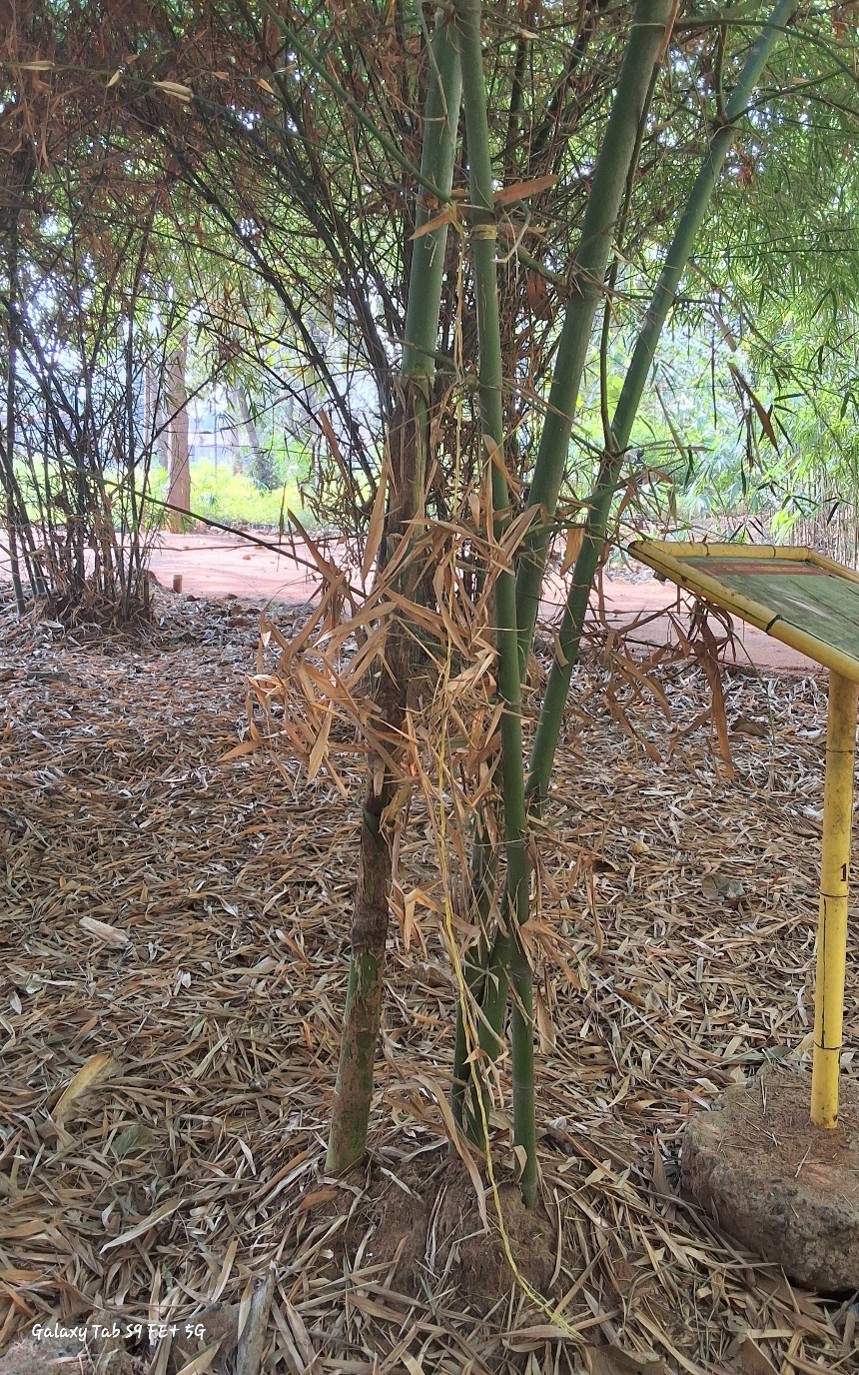Dendrocalamus membranaceus

Dendrocalamus membranaceus
Dendrocalamus membranaceus also known as Membranous Bamboo, is a clumping bamboo species native to Southeast Asia, particularly found in regions like Myanmar, Thailand, Laos, and Vietnam. It typically grows in tropical and subtropical forests, thriving in moist and riverine areas. This bamboo grows to a height of 12 to 18 meters, with a diameter of 8 to 14 cm. The culms are green with a yellowish hue, becoming lighter with age. The internode length ranges from 25 to 40 cm, and the culm sheath is green when young, turning brownish or light yellow as it matures. The adaxial surface is smooth and glabrous, while the abaxial surface is hairy, with dense brownish hairs. The margins of the sheath are ciliate.
Dendrocalamus membranaceus is adapted to regions with annual rainfall ranging from 1,000 mm to 2,500 mm, typically in tropical and subtropical climates. It prefers fertile, well-drained soils with a loamy or clay texture but can tolerate a range of soil types. The bamboo is found at elevations ranging from 300 m to 1,200 m.
The leaves of Dendrocalamus membranaceus are lanceolate to elliptic in shape, with a length of 20 to 35 cm and a breadth of 4 to 6 cm. The inflorescence is a large, panicle-type structure with several branches, producing numerous small flowers. The empty glumes are ovoid, with multiple veins, and the flowering glumes are larger than the empty glumes, ciliate on the edges, and hairless. The stamens are exserted with glabrous anthers, and the pistil has a slightly hairy style and a small stigma. Flowering occurs once in the plant's lifetime, typically every 30 to 40 years, and flowering events have been reported in Myanmar, Thailand, and Vietnam.
Seed production is rare due to the long flowering cycle. Dendrocalamus membranaceus can be propagated through culm cuttings, clump division, offsets, and sometimes tissue culture.
This bamboo is used extensively in construction for making poles, scaffolding, and structures, especially in rural areas. Its straight, tall culms are ideal for crafting furniture and handicrafts. The bamboo is also suitable for pulp production and paper-making. The young shoots are edible and widely consumed in several Southeast Asian cuisines. Additionally, Dendrocalamus membranaceus is useful for preventing soil erosion, particularly in hilly or unstable areas, due to its dense growth and strong root system.
Listen Audio:
Need assistance? BRTC Faculty